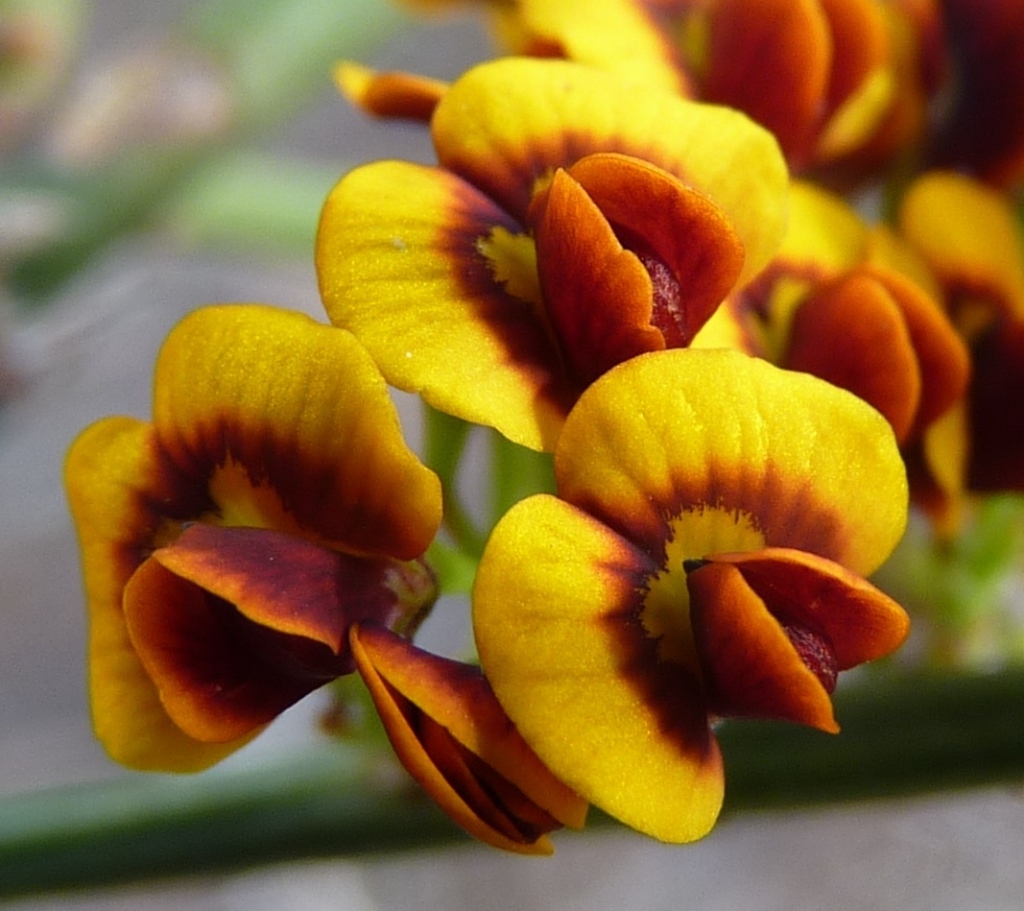Daviesia leptophylla
A.Cunn. ex G.Don Narrow-leaf Bitter-peaMultistemmed shrub to c. 2 m tall; branches ascending, glabrous; branchlets angular, ribbed, sometimes bare towards tips. Phyllodes linear-elliptic to linear-obovate, to 9 cm long, to 10 mm wide, dull yellow-green, convex above, margins slightly recurved, apex acute to obtuse, mucronate, base tapering, articulate, subsessile; midrib prominent, venation longitudinal, conspicuous, a strong nerve near each margin. Inflorescences 1–4 per axil, subcorymbose, 5–10-flowered, rachis usually 2.5–15 mm long; peduncle 1.5–10 mm long; pedicels 1–4 mm long, subtended by a subulate appressed bract c. 1 mm long. Calyx 3.5–4.5 mm long including 1–2.5 mm receptacle, upper 2 teeth united into a nearly entire lip; corolla mostly orange-yellow; standard transversely broadly elliptic, 5.5–6.5 mm long, 6–7 mm long, orange-yellow with a maroon marking. Pod obliquely triangular, 5–10 mm long, 3.5–6 mm wide; seeds usually 2, ovate-reniform, 2.5–3.5 mm long. Flowers Aug.–Dec.
Wim, GleP, VVP, VRiv, MuF, GipP, OtP, WaP, Gold, CVU, GGr, DunT, NIS, EGL, EGU, HSF, HNF, OtR, VAlp. Also SA, NSW. Widespread across central Victoria, usually in dry open sites in sclerophyll forest, growing on poor skeletal soils.
Possible hybrids with D. latifolia, D. laevis, D. laxiflora and D. mimosoides subsp. mimosoides have been observed in some areas.
Jeanes, J.A. (1996). Fabaceae. In: Walsh, N.G.; Entwisle, T.J., Flora of Victoria Vol. 3, Dicotyledons Winteraceae to Myrtaceae, pp. 663–829. Inkata Press, Melbourne.
 Spinning
Spinning

